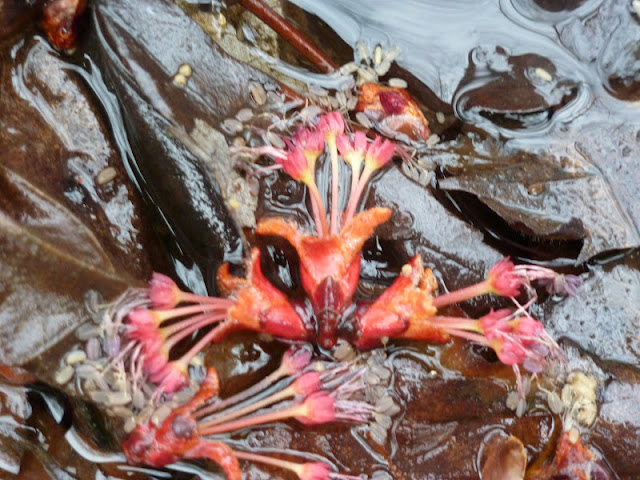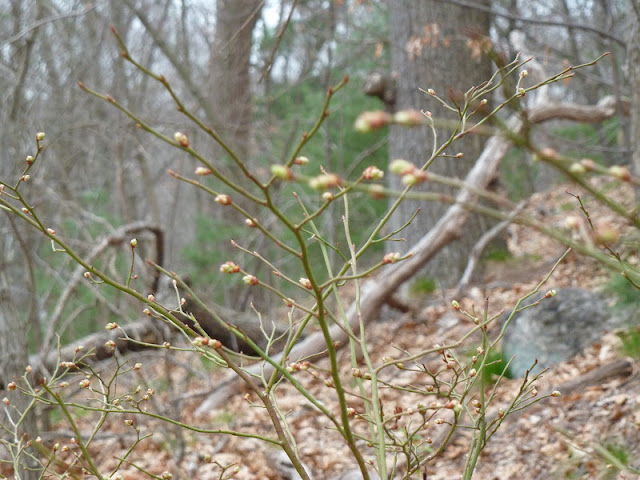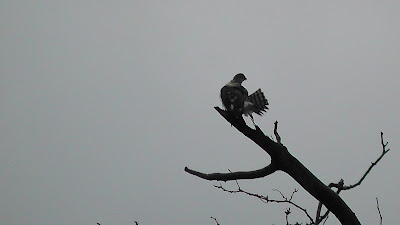My tree climbing and bird watching friend Andrew told me that a Great Horned Owl had been spotted in Franklin park. Yesterday I took the boys out to see if we could find it. We certainly found lots of traces, little furballs and feathers and bones, and the Bluejays were screaming which they do when they locate owls. But we didn't see any, so today we returned in the company of Andrew. On the way we spotted many things worth seeing.
A romantic couple in the little Stony Brook creek.
Limegreen Spicebush flowers, shining by the waterside.
Red maple flowers fell in the water.
The cowbirds returned to the maple outside my house.
Boys in a fort - work in progress.
Looks promising.
Being in the woods with a real bird expert is a lot of fun.We spotted flickers, redbellied woodpeckers and both hawks and turkey vultures. By a little wetland we saw some welcome migrants - chipping sparrows, lots of Redwinged blackbirds, a relaxed song sparrow drying up in the sun after a bath. When we went through the woods and ended up at the pond it got even more interesting. I've never before seen Pine warblers or Phoebes or Palm warblers, but today they were there, although not within camera distance. These little migrants overwinter in the South of the US, and their song is always a great sign of spring. While me and Andrew were watching up the tree tops with our binoculars, Milo went down to the pond and checked out the geese.
Time was short so we moved on toward the pine grove where the owls were rumored to roost.
We found the same traces as yesterday -pellets of little bones, feathers and fur, and some spotting on tree trunks, but if the owls were there, they were hiding very well.
Practicing owl-hooting
We also spotted a few turtles - here's a painted one.
Seeing an owl is something I've wanted for a while, so I might very well be back in the pine grove very soon.































































